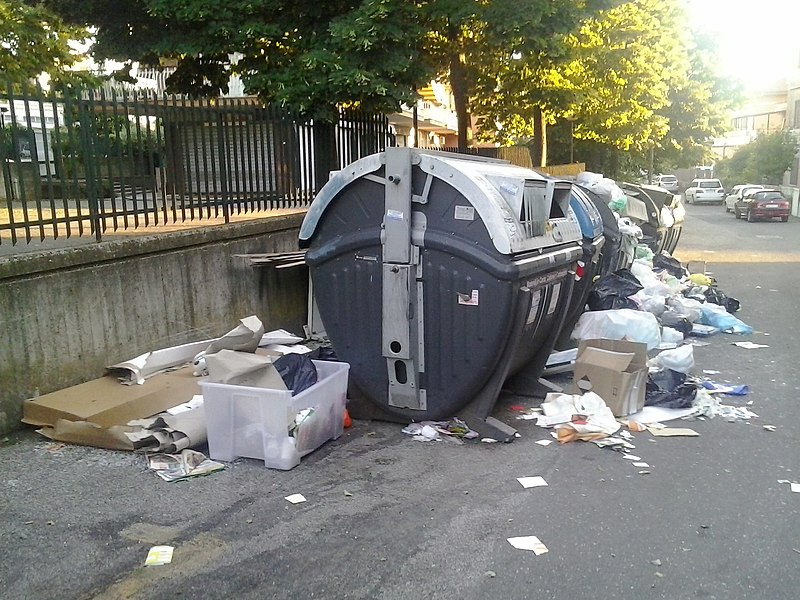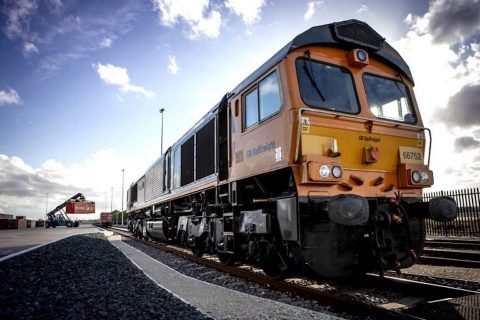Disputed Rome-Amsterdam waste service allegedly doubles capacity

A rail service that went through much questioning will probably double its volumes. The trains linking Rome to Amsterdam, transporting the Italian capital’s waste to AEB’s waste incineration plant, could soon transport 1,800 tons of garbage per week instead of 900 as initially planned. In such a case, Mercitalia Rail would run two weekly trains instead of one between the two destinations.
Italian and Dutch media reports claim that the municipality of Rome aims to renegotiate its waste management contract and send more garbage to AEB. For AEB, this would mean more revenue. Rome has already been paying 200 euros per ton of waste which amounted to 180,000 euros per week. This sum will now reach 360,000 euros weekly, making the Italian capital’s garbage disposal business quite costly.
Against all criticism
The Rome-Amsterdam waste transport service commenced on 1 April after previous similar attempts had failed. Maybe the starting date made several Dutch, but also Swiss politicians receive it as an April fool’s joke since they were not that happy with the development.
Concerning the Dutch political panorama, right-wing independent Dutch Senator Henk Otten, for example, complained on Twitter with an emphatic “what in heaven’s sake are we doing?”. Otten pointed out that Dutch farmers had to stop activities due to nitrogen production being deemed too high. “Adding 900 tons of waste per week from other countries to burn here in The Netherlands is a very contra-productive step to take if we want to reduce our CO2 and Nitrogen output”, he told RailFreight.com. The latest news could add more to his argument.
Moreover, Laura Bromet, a member of the leftist party GroenLinks and the Dutch House of Representatives, ironically commented on Twitter that “we meant more trains differently”. On the other hand, Swiss MP Bruno Storni pointed out that the new service does not benefit Switzerland but, on the contrary, reduces capacity for passenger services. According to Storni, the project of sending Roman waste to Amsterdam via the Rhine-Alpine Corridor is an absurd initiative. He pointed out that room for passenger trains on this corridor is vital. “We need to reduce, and not increase, rail freight traffic via this corridor”, he said.
Hans-Willem Vroon, director of the Dutch rail freight association RailGood, also shared his views on the matter with RailFreight.com. Vroon pointed out that the Netherlands burns tens of millions of tonnes of imported waste, mainly from the UK and Ireland, and questioned the sustainability of such practices. “The question is whether the Netherlands wants to be the ‘waste incineration plant’ in Europe, where government, authorities, and waste processing in certain European regions are failing”.
Rome’s struggles with waste management
The Italian capital has been struggling with waste disposal for at least a couple of decades. The Malagrotta site, the main facility for waste disposal in Rome, reached saturation in 2003 and was then closed in 2013. Since then, the various councils ruling the city have struggled with finding a definite solution to this issue.

To try and accommodate the problem of waste disposal, the Italian capital is working on opening a new waste incineration plant by the summer of 2026. Acea Ambient, a waste disposal company in Rome, submitted a proposal for the construction of the facility at the beginning of March. Tenders for this project will be available from 1 August 2023, with works planned to start in July 2024.
Also read:




